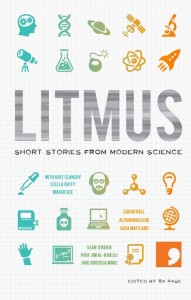When a Character Comes to Life

Well, strictly speaking, the main character in my new short story, ‘What If?,’ didn’t come to life, he was alive already and having him comment on what I had written about him was one of the strangest and most fascinating events in my writing life.
This is how it came about. Last year, Ra Page, the editor at Comma Press, got in touch to say that he was planning a volume of short stories on eureka moments in science. His idea was a number of such moments would be suggested by scientists, and writers would be asked to chose one. They would meet the scientist who put the idea forward and learn about the science. They would write their story. The scientist would check it for scientific accuracy and write an afterword.
I was doubtful. My scientific education stopped a very long time ago with O Level Biology (disserting frogs! eek!) and then, what if I chose a subject and couldn’t think of anything to write? But then I remembered that I hadn’t thought I could write a horror story either – but I had, for one of Ra’s earlier anthologies. And I recalled what my husband had said then: ‘You’re a writer, aren’t you? So, write something.’
That was how a few months ago I found myself in a lab in Manchester having the Polymerase Chain Reaction explained to me by a very impressive young scientist, Angharad Watson. PRC was irresistible to me as a crime writer, because it allowed for the first time the amplification of tiny amounts of DNA within a short time and not only revolutionised the study of genetics, but led to the solving of crimes in some cases decades old. It is also the nearest thing to a eureka moment in all of modern science. The idea came to its inventor, a biochemist called Kary Mullis, as he drove from Berkeley to his cabin in Medocino County in May 1983.
Never has one of my stories involved such sheer intellectual graft and several drafts went back and forth before Angharad was satisfied that the science was accurate enough. At the same time it had to stand up as a story. When it was finished, Ra sent it to Kary Mullis. And when he returned it with only a few minor comments, I was very proud.
Publication of the anthology is on the 30 June, and I have a copy beside me as I write. It’s got stories by Frank Cottrell Boyce, Stella Duffy, Maggie Gee, Jane Rogers, and many more. The scientists include Professor Jim Al-Khalili. And it’s got a great cover, too. You can order it at a reduced price from www.commapress.co.uk/?section=books&page=Litmus
PS. It’s a good month for book launches. I am going to Sue Hepworth’s this evening.
2 Comments
djskrimiblog
June 9, 2011I have always said that if anyone wanted to teach me science, they´d just have to put it into a crime story and I´ll do what it takes to understand it. I can see it also works the other way round 🙂
Christine
June 10, 2011Nice to hear from you. I’m following your blog, too.